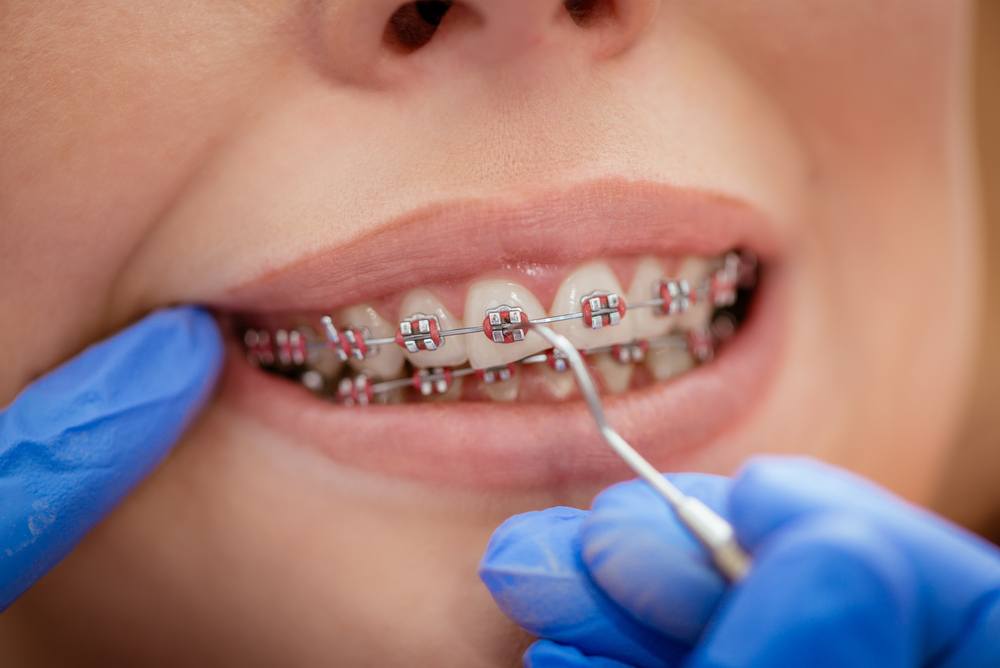Expert Cumming Braces and Aligners: What to Know Before You Go to
Expert Cumming Braces and Aligners: What to Know Before You Go to
Blog Article
Comprehensive Guide to Orthodontics Treatments for Correcting Dental Imbalances
Understanding the ins and outs of each treatment, including their devices, advantages, and possible downsides, is critical in making educated decisions about one's orthodontic therapy. As we browse with the extensive guide to orthodontic treatments for correcting oral imbalances, the complex details of each method will certainly unfold, dropping light on the path towards a unified and practical dental alignment.
Orthodontic Procedures Review

Along with clear aligners and traditional dental braces, orthodontists might additionally suggest various other interventions like headwear, palatal expanders, or retainers to deal with particular alignment problems (cumming aligners). These procedures are customized to each individual's unique requirements and may include a mix of treatments to achieve the wanted results. Routine changes and monitoring are critical parts of orthodontic treatment to make certain progress is on track and to make any kind of necessary modifications along the means. By undertaking orthodontic procedures, clients can not just attain a straighter grin but likewise enhance their total dental wellness and function.
Traditional Braces: How They Work
When considering orthodontic therapies for dental misalignments, typical braces stand out as a reliable technique for fixing teeth placing. Standard braces are composed of brackets, cords, and bands that collaborate to use continuous stress on the teeth, slowly relocating them into the wanted positioning. The brackets are affixed to the teeth using an unique adhesive, and the wires are threaded via the brackets. By changing the tension of the cords, orthodontists can manage the instructions and force applied to each tooth, assisting them into appropriate alignment over time.
One trick element of exactly how typical dental braces job is the process of bone remodeling. As stress is related to the teeth through the dental braces, the bone surrounding the teeth is improved to sustain the new tooth settings. This makeover is necessary for the long-term stability of the remedied alignment. Patients will certainly need routine changes at the orthodontist's workplace to make sure the braces remain to apply the right pressure for reliable teeth motion.
Unnoticeable Aligners: Cons and pros
These clear, custom-made trays are basically undetectable when put on, making them an attractive choice for individuals looking for a much more cosmetically pleasing orthodontic treatment. Individuals can eliminate the aligners before eating or brushing their teeth, lowering the threat of food getting stuck in the device and simplifying the cleaning process.

Surgical Orthodontic Options
Surgical treatments in orthodontics existing practical alternatives for resolving complicated oral imbalances that may not be successfully fixed via conventional orthodontic treatments. While unseen aligners and traditional braces can deal with several orthodontic issues, particular situations need medical treatment to attain ideal outcomes. Surgical orthodontic choices are commonly recommended for serious malocclusions, substantial jaw discrepancies, and instances websites where the underlying bone framework needs modification to attain correct placement.
One typical medical orthodontic procedure is orthognathic surgery, which entails rearranging the jaws to fix functional concerns such as problem speaking or eating. This surgical treatment is frequently done in collaboration with an orthodontist that helps straighten the teeth before and after the procedure. Surgical orthodontics may also involve treatments to reveal affected teeth, eliminate excess gum tissue, or reshape the jawbone to produce a much more unified face profile.
Prior to considering medical orthodontic options, individuals undertake a comprehensive examination to determine the need and potential advantages of such treatments. braces. While surgical procedure might appear overwhelming, it can considerably boost both the function and aesthetics of the smile in cases where standard orthodontic therapies drop short
Retainers and Post-Treatment Treatment

Post-treatment care includes adhering to the orthodontist's directions diligently. This may include correct dental health practices, going to follow-up visits, and wearing the retainers as prescribed. Failing to comply with post-treatment care instructions can lead to relapse, where the teeth gradually return towards their initial settings. Constant retainer wear, good oral health, and normal dental check-ups are necessary for keeping the outcomes attained via orthodontic surgery and making sure the lasting stability of the remedied oral placement.
Final Thought
In conclusion, view orthodontic procedures use different choices for fixing oral misalignments. Surgical orthodontic options are available for much more extreme imbalances. Generally, orthodontic treatments can properly enhance oral health and aesthetic appearance.
As we navigate with the thorough guide to orthodontic treatments for fixing oral misalignments, the intricate information of each technique will certainly unravel, dropping light on the path toward a practical and harmonious oral alignment. - aligners
One of the most typical orthodontic treatments is the use of dental braces, which are composed of metal braces and cords that apply mild pressure to progressively change teeth right into the preferred placement.When thinking about orthodontic treatments for dental misalignments, traditional braces stand out as a reliable technique for dealing with teeth positioning. In addition, unseen aligners might not be suitable for complicated orthodontic issues that call for more significant teeth movement, as they are typically recommended for mild to moderate instances. Retainers are custom-made orthodontic gadgets designed to hold teeth in their corrected placements after the completion of orthodontic therapy.
Report this page